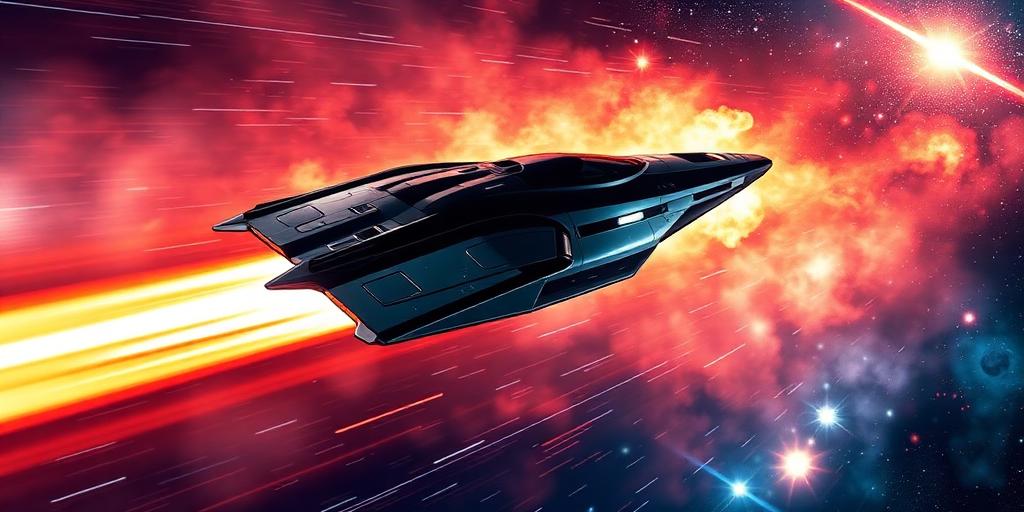Faster-Than-Light Travel: A Scientific Inquiry into Humanity's Cosmic Dream
The allure of Faster-Than-Light (FTL) travel has captivated humanity for generations, serving as a cornerstone of science fiction and a beacon of hope for interstellar exploration. The thought of traversing vast cosmic distances within a human lifespan fuels our imagination, yet the fundamental laws of physics present a formidable barrier. Could we ever achieve true FTL travel, or is it destined to remain a captivating dream?
The Cosmic Speed Limit: Einstein's Enduring Postulate
At the heart of the FTL dilemma lies Albert Einstein's Special Theory of Relativity. A cornerstone of modern physics, this theory posits that the speed of light in a vacuum (approximately 299,792,458 meters per second) is the absolute cosmic speed limit. According to Einstein, as an object with mass approaches the speed of light, its mass increases infinitely, requiring an infinite amount of energy to accelerate it further. This makes conventional propulsion-based FTL travel not just incredibly difficult, but theoretically impossible.
This principle is not merely a theoretical construct; it has been rigorously tested and confirmed by countless experiments. Every particle accelerator, every observation of cosmic phenomena, reinforces the idea that nothing with mass can accelerate to the speed of light, let alone surpass it. This universal speed limit dictates the very fabric of space-time as we understand it, profoundly impacting the feasibility of FTL travel.
Circumventing the Limit: Theoretical Loopholes
Despite the seemingly insurmountable barrier, theoretical physicists have explored ingenious, albeit highly speculative, concepts that might allow for effective FTL travel without violating Einstein's principles directly. These concepts don't involve moving through space faster than light, but rather manipulating space-time itself.
The Alcubierre Warp Drive
One of the most widely discussed concepts is the Alcubierre warp drive, proposed by physicist Miguel Alcubierre in 1994. Inspired by science fiction, this theoretical engine would not propel a spacecraft faster than light within local space. Instead, it would create a "warp bubble" by contracting space-time in front of the vessel and expanding space-time behind it. The spacecraft itself would remain stationary within this bubble, effectively riding a wave of distorted space-time, much like a surfer rides an ocean wave.
The concept is elegant, but its requirements are staggering. The Alcubierre drive necessitates the existence and precise manipulation of "exotic matter" – matter with negative energy density. The existence of such matter is purely theoretical, and its creation or control is far beyond our current technological capabilities. Furthermore, calculations suggest the energy requirements for even a microscopic warp bubble would be astronomical, far exceeding the mass-energy equivalence of entire planets.
Wormholes: Shortcuts Through Space-Time
Another theoretical pathway to traversing vast distances quickly involves wormholes, often referred to as Einstein-Rosen bridges. These hypothetical tunnels through space-time could potentially connect two distant points, allowing for instantaneous travel between them. Instead of traveling the immense distance, one would simply step through a shortcut.
Like the Alcubierre drive, stable, traversable wormholes would likely require exotic matter to prevent them from collapsing instantly. The physics governing their formation and stability are incredibly complex, and their existence remains entirely speculative. Even if they could exist, generating and maintaining a wormhole for interstellar travel presents Alcubierre drive challenges that are currently unfathomable.
Quantum Entanglement (Not FTL Travel)
It's important to briefly address quantum entanglement, which is sometimes mistakenly associated with FTL communication or travel. While quantum-entangled particles appear to influence each other instantaneously regardless of distance, this phenomenon does not allow for the transfer of information faster than light. The correlation is instant, but the information itself cannot be controlled or modulated to transmit a message. Thus, it offers no pathway to FTL journeys or communication.
The Monumental Hurdles for Space-Time Manipulation
Beyond the theoretical elegance, the practical implementation of any space-time manipulation technology faces formidable obstacles:
- Exotic Matter: The requirement for negative energy density is the most significant hurdle. Current physics offers no clear path to producing or controlling such matter on the scales needed for FTL.
- Energy Demands: Even if exotic matter existed, the energy required to initiate and sustain warp bubbles or stabilize wormholes would be colossal, potentially exceeding the energy output of entire stars.
- Engineering Complexities: Creating and controlling space-time distortions with the precision needed is an engineering challenge that is light-years beyond present technology. The precision required for space-time manipulation for interstellar travel is immense.
- Causality Violations: Many FTL scenarios, particularly those involving warp drives or wormholes, raise concerns about causality violations, potentially allowing for paradoxes like time travel.
- Destructive Side Effects: Theoretical analyses suggest that a warp drive's rapid deceleration could release enormous amounts of energy, effectively vaporizing anything in its path upon arrival.
Conclusion: A Distant Dream, A Catalyst for Research
As fascinating as the concept of Faster-Than-Light travel is, our current understanding of physics places it firmly in the realm of theoretical speculation. While concepts like the Alcubierre warp drive and wormholes offer tantalizing glimpses into how one might theoretically circumvent Einstein's speed limit, the prerequisites—namely exotic matter and unimaginable energy levels—present theoretical FTL propulsion challenges that are currently insurmountable.
For now, FTL travel remains a powerful inspiration for scientific inquiry, pushing the boundaries of theoretical physics and astrophysics. It compels us to explore the universe's fundamental laws, even if the journey to the stars at warp speed remains a distant, beautiful dream. The pursuit of such grand ambitions, however, often leads to unexpected breakthroughs that reshape our understanding of the cosmos.









